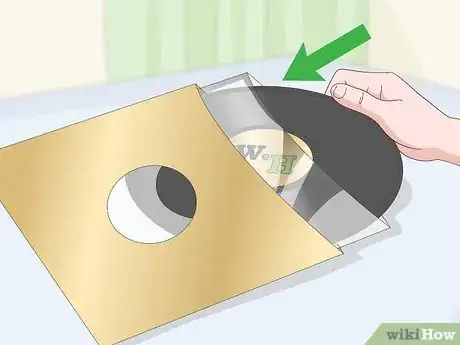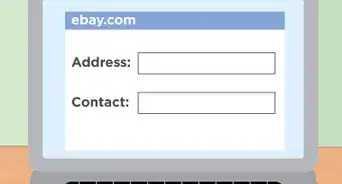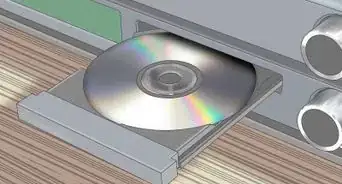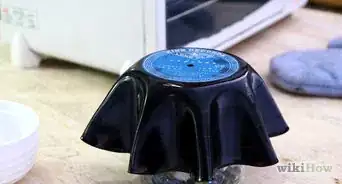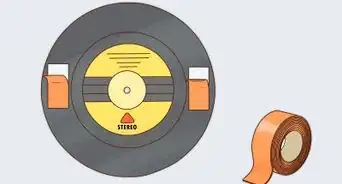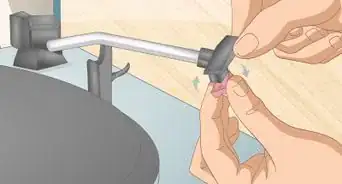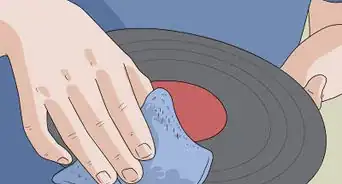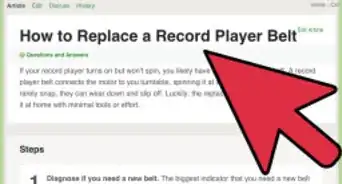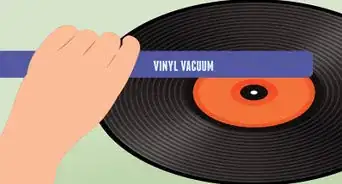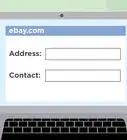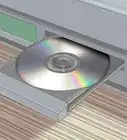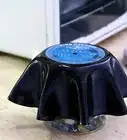This article was co-authored by wikiHow Staff. Our trained team of editors and researchers validate articles for accuracy and comprehensiveness. wikiHow's Content Management Team carefully monitors the work from our editorial staff to ensure that each article is backed by trusted research and meets our high quality standards.
This article has been viewed 223,921 times.
Learn more...
Many vinyl enthusiasts claim that you can’t get a great sound from any other means of playing music. Maybe your passion is collecting old, rare vinyl, or maybe you love the new releases that are now available on vinyl due to the recent spike in popularity of vinyl records.[1] Storing your record collection is important for maintaining the quality of the sound, and you should consider location, temperature, and condition of the records in order to keep them safe.
Steps
Storing Your Collection
-
1Check for warped records. Especially when dealing with a collection of older records, it’s important to check for warps in the record. This happens when the vinyl is overheated or exposed to too much humidity. It can lead to bumps or irregularities in the shape of the disc.
- If you have a warped record, remove it from the cardboard cover (but keep it in the protective sleeve), and place it between two thick plates of glass. Stack a few heavy books on top of the glass and leave them for 7-10 days.[2]
- This might not be effective for every record, but if it doesn’t work, there are always other ways to use your record. You could even try making a Salvador Dali clock out of it!
-
2Buy extra protective sleeves for your records. If you have an expansive collection, chances are that you have a few records that are missing their protective sleeve. It’s important to keep your record covered before storing it, especially for vintage records.[3]
- Most record sleeves for sale are anti-static, acid free, and generally offer more protection for your record than the sleeves that come in the original packaging. If you do a lot of listening to your collection, consider getting aftermarket sleeves.
Advertisement -
3Protect your records from dust. Storing your records in both an inner and outer sleeve will protect them from dust. Also be sure to regularly dust and vacuum the area where you store your records, to keep dust from settling onto the packaging and storage shelves and potentially harming your records.[4]
-
4Protect your records from heat. Heat will ruin records by warping them. Keep your records in an area that is room temperature, and away from windows, vents, radiators, and other sources of heat.
- Sunlight is also damaging to records, and can lead to warping. It is important to make sure your records are not stored or played for long periods of time in direct sunlight.
-
5Store records vertically. Since records are heavier in the middle than the sides, storing horizontally over long periods of time will lead to warping.
- Try to make sure your records are as vertical as possible. It might be helpful to use a bookend to hold your records upright like you would books on a shelf.
Handling Your Records
-
1Handle records with care. Records are fragile and will break when dropped. Additionally, the oils from your fingers can transfer onto the material and build up over time. It's important to hold records by the sides or the center label only.[5]
- Never move the arm on your record player by hand, as the drop of the needle can harm your record. Use the cueing lever on your record player and aim for the area, letting the arm drop slowly to prevent gouging the vinyl.
-
2Clean your vinyl records regularly. Keeping your records clean will minimize the potential for damage from dust, dirt, and other particles which could result in scratching. There are a few steps for cleaning:
- Gently wipe records with a carbon fibre brush before and after each play, and before you begin a deep clean.
- Wrap your index finger in a lint-free cloth, and lightly dip it into a bowl of warm, distilled water.
- Gently rub your finger over the record in a circular motion following the grooves of the record, moving clockwise from the center of the record out.
- Once at the edge of the record, wipe counter-clockwise back into the center of the record.
- If your record is still not clean, mix a drop of dish soap into the distilled water and repeat. All soap will leave a residue, so try not to use any soap to clean your records.
- Rinse once more by wiping with distilled water to remove residue from soap.
- Records should be dry immediately due to small amount of water used.
- Avoid getting the label wet. If you do, pat dry with a clean, lint-free towel.
- If your record is still not clean, consider using a record vacuum system. Although expensive, they are engineered to do the best job of cleaning your records while keeping them safe.
-
3Take special care of shellac records. Any records made from shellac, such as some 78rpm records, should be cleaned either professionally, or using professional cleaning solutions specifically made for this purpose. Early shellac records are very porous and will absorb any residue, leading to damage.[6]
- For a shellac record that is older and more resilient, you can try the method for cleaning using distilled water and a small amount of dish soap.
-
4Place cleaned records in a new, clean sleeve. Having extra sleeves on hand will be helpful for when you clean your records. If you have a problem with dust or dirt in your collection, cleaning your record will help, but placing them in new sleeves after cleaning will ensure that they aren’t getting dirty again.
-
5Ensure that your record player is in good condition. A poorly maintained record player can harm your records by gouging the surface and allowing dust onto your record. Keep the needle sharp and the turntable clean to ensure the safety of your collection.[7]
Community Q&A
-
QuestionWhat is a good temperature to store your records?
 Samantha L. CampbellCommunity AnswerMost experts recommend any temperature between 45 and 70 degrees Fahrenheit as safe for long-term storage of records.
Samantha L. CampbellCommunity AnswerMost experts recommend any temperature between 45 and 70 degrees Fahrenheit as safe for long-term storage of records. -
QuestionHow I prevent a record player from getting scratched?
 Samantha L. CampbellCommunity AnswerAlways handle records and your record player with care. Using the cue lever, maintaining the cleanliness of the turntable, and keeping the lid closed when not in use will help protect your record player from scratching.
Samantha L. CampbellCommunity AnswerAlways handle records and your record player with care. Using the cue lever, maintaining the cleanliness of the turntable, and keeping the lid closed when not in use will help protect your record player from scratching. -
QuestionHow do you tell which side of a 45 is side one?
 Community AnswerThe only sure way to tell is to look at the label. Or, if you know which order the songs are in, just start playing it from a side, and then you'll know.
Community AnswerThe only sure way to tell is to look at the label. Or, if you know which order the songs are in, just start playing it from a side, and then you'll know.
References
- ↑ http://diffuser.fm/vinyl-sales-chart/
- ↑ http://www.vinylmeplease.com/magazine/guide-to-flattening-warped-vinyl-records/
- ↑ http://www.vinylmeplease.com/magazine/inner-outer-record-sleeves/
- ↑ http://www.vinylmeplease.com/magazine/inner-outer-record-sleeves/
- ↑ https://www.discomusic.com/10-things-not-to-do-to-your-vinyl-records
- ↑ http://best-turntables.com/clean-78-rpm-records/
- ↑ https://www.artofmanliness.com/2012/11/09/a-beginners-guide-to-buying-your-first-turntable/
About This Article
To keep a record collection safe, store your records vertically and keep them away from sources of heat so they don't warp. You should also keep your records in both an inner and outer sleeve to protect them from dust. If you've lost some of the sleeves for your records, order new protective sleeves online. Also, wipe down your records with a carbon fiber brush before and after each play to keep them from getting dirty. To learn how to clean records with soap and water, scroll down!








